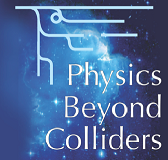Speaker
Description
When the LHC results (no new physics yet, and the Higgs mass at 125 GeV) are interpreted in terms of pre-LHC expectations (SUSY), one faces a sobering thought of superpartner masses at or above 10 TeV. Only a very few types of indirect experiments are capable of probing these energy scales with radiative corrections. Electric dipole moments are perhaps the most promising avenue to access the extreme short distance scale physics. I give a brief introduction to the subject, and outline possible directions for future improvements. In the second half of my talk, I give an appraisal to the existing tension between theory and experiment in determining muon g-2. Interpretation of this tension as a sign of new physics points to two generic possibilities: either new physics in the leptonic sector around the weak scale and/or new light sub-GeV states coupled to muons. The latter possibility is being studied in the intensity frontier experiments, and I will briefly outline possibilities for improving sensitivity to light weakly coupled states.
